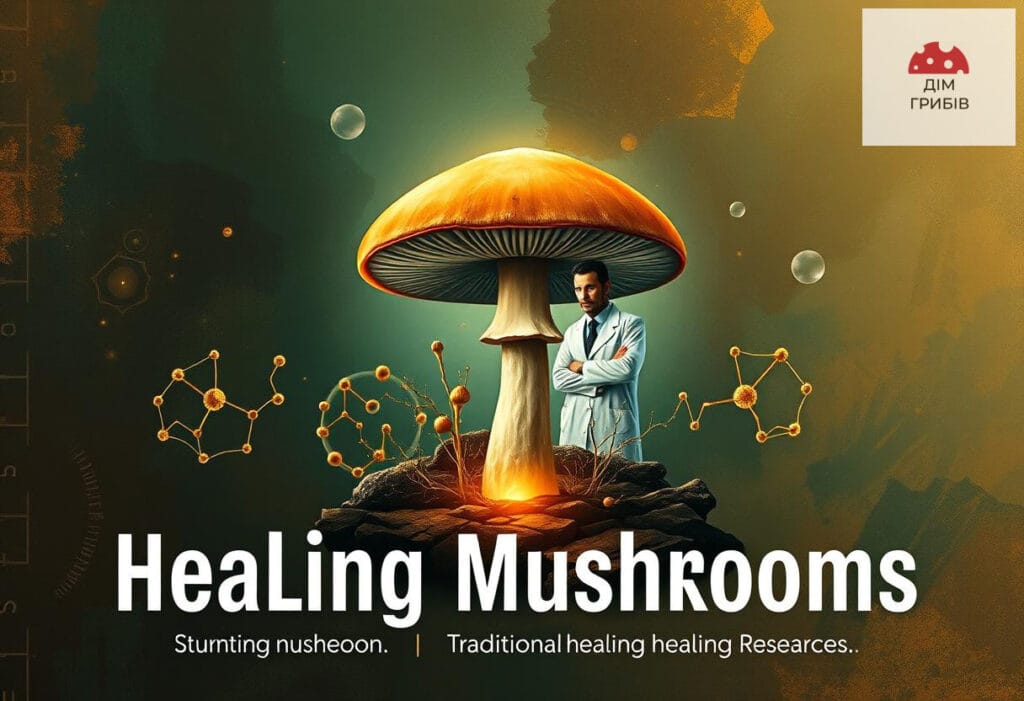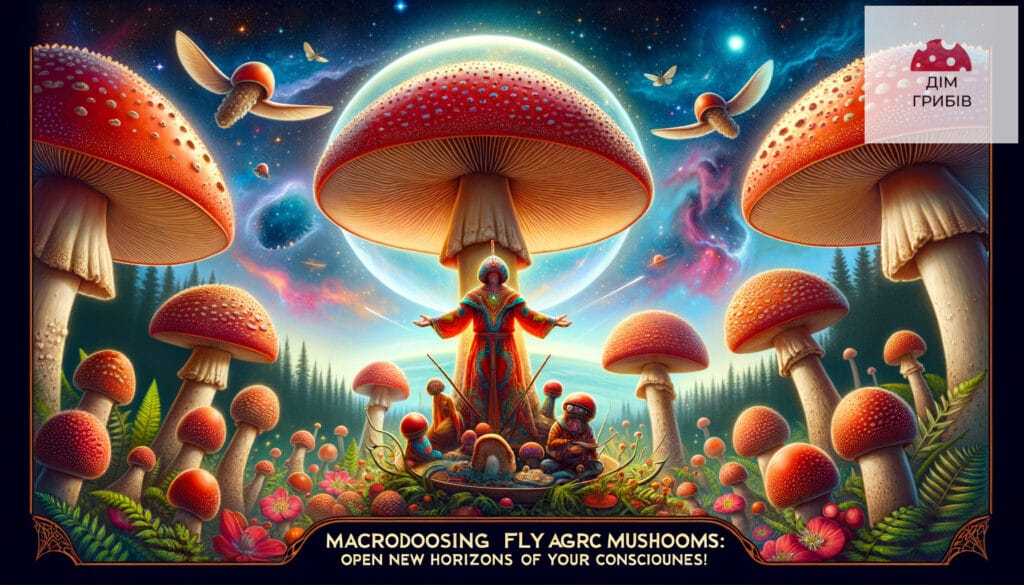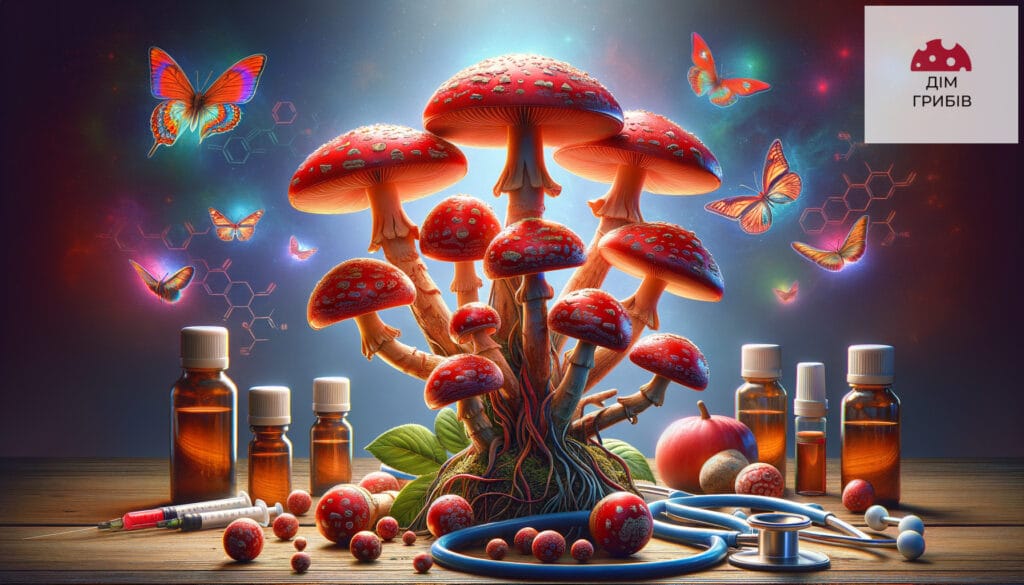Fly agaric treatment: discover the secrets of natural power for health and fighting disease!

Introduction
Relevance of the topic and historical context
Amanita muscaria is gaining increasing popularity due to its unique pharmacological properties and centuries-old role in traditional medicine. For centuries, people have been looking for natural ways to alleviate the symptoms of various diseases, and the use of amanita muscaria is a vivid example of the integration of ancient knowledge with modern scientific discoveries. Archaeological and literary sources indicate that even ancient civilizations used these mushrooms not only for ritual purposes, but also for the treatment of various diseases.
Modern research confirms that biologically active substances contained in fly agarics can affect the immune system, nervous system and metabolic processes of the body. This discovery indicates the possibility of further use of traditional methods in modern pharmacotherapy. More detailed information on the historical use of natural remedies can be found in studies published on WHO website, which confirms the importance of historical context for understanding the mechanisms of action of fly agarics.
The evolution of medical practices reflects the synthesis of traditional methods with modern approaches, making more effective treatments available today. This approach promotes the use of accumulated knowledge to overcome the challenges of modern medicine, especially with the increasing number of chronic diseases.
Purpose and objectives of the study
The aim of this work is a comprehensive analysis of the potential of fly agarics in the treatment of various diseases, based on a combination of traditional knowledge and modern clinical data. The main tasks include:
- Study of the biochemical composition of fly agarics and their effect on the human body.
- Conducting a comparative analysis of traditional methods and modern treatment technologies.
- Assessing the safety of using these mushrooms, including possible risks and contraindications.
- Development of recommendations for doctors using the obtained data in treatment practice.
It is also important to explore the potential of integrating traditional methods with modern pharmacological research, which will allow for the creation of more personalized and effective therapeutic regimens. To this end, an analysis of numerous clinical studies was conducted, the results of which became the basis for the further implementation of innovative technologies in the field of medicine.
Biology and medicinal properties of fly agarics
Biological features of fly agarics
Amanitas belong to a special group of fungi, distinguished by their bright colors and complex morphology. Their presence in natural ecosystems indicates a high adaptability to various environmental conditions. The main components of these fungi are alkaloids, amino acids, terpenes and other biologically active substances that affect cellular processes.
Current research is focused on identifying the molecular mechanisms of the effects of these components on the human body. For example, it has been determined that certain alkaloids can affect neural receptors, stimulating natural tissue regeneration processes and improving immune system function. Details of the mechanisms can be checked in scientific publications, such as those posted on Nature.
| Component | Main function | Potential effect |
|---|---|---|
| Alkaloids | Effect on neurons | Stimulation of regeneration, pain reduction |
| Amino acids | Increasing metabolic processes | Strengthening immunity |
| Terpenes | Antioxidant protection | Reducing inflammatory processes |
It is important to note that mushroom therapy is based not only on the effects of individual components, but also on the complex interaction of all biological substances. This makes fly agarics a unique tool in natural pharmacotherapy.
Traditional uses and modern approaches to fly agaric treatment
In traditional cultures, fly agarics have been used to treat neurological, inflammatory and immunological diseases due to their powerful effects on the nervous system and immunity. Local experts carefully selected and processed these mushrooms, which allowed them to obtain highly effective drugs. Modern science confirms that traditional methods can be adapted using modern clinical techniques to achieve even better results.
Modern approaches to treatment using fly agarics combine traditional knowledge with high-precision pharmacological research. Scientists analyze the molecular mechanisms of action of alkaloids and other components, which allows developing new drugs with minimal side effects. Among the leading researchers in this field are specialists who publish their results on resources such as experts in the field of fungal therapy and secrets of healing research on medicinal mushrooms.
To better understand modern approaches to treatment using fly agarics, we will list the main advantages and features that make this method promising:
- Synthesis of traditional knowledge and modern research.
- High specificity and regenerative potential of the components.
- Possible use in the treatment of both neurological and inflammatory diseases.
- Support from leading scientific organizations.
Practical use of fly agarics in the treatment of diseases
Overview of diseases where fly agaric is used for treatment
Modern research shows that fly agarics can be used in the treatment of a wide range of diseases. Due to their complex composition, these mushrooms have the potential to be used as both a primary therapeutic agent and an auxiliary drug. Among the main diseases for which fly agaric treatment is used, the following can be distinguished:
- Neurological disorders: treatment of migraines, chronic pain, and stress disorders.
- Rheumatoid arthritis: reducing inflammation and relieving pain.
- Immunological diseases: stimulation of the immune response in viral infections and autoimmune disorders.
- Mental disorders: correction of neurochemical processes, helping to reduce stress levels and improve sleep.
A careful analysis of clinical data shows that the natural components of fly agarics are able to influence both the symptoms and the causes of the development of diseases. To visualize this data, we present a comparative table of the effects of using traditional treatment and methods based on fly agarics:
| Disease | Traditional treatment | Fly agaric treatment |
|---|---|---|
| Neurological disorders | Painkillers, analgesics | Analgesic effect, regulation of neurotransmitters |
| Rheumatoid arthritis | Anti-inflammatory drugs | Reducing inflammation, improving mobility |
| Immunological diseases | Immunostimulating medications | Stimulation of the natural immune response |
This comparison illustrates how traditional and modern methods can work symbiotically to achieve the best clinical outcomes. In addition, numerous studies published on CDC, demonstrate the safety and effectiveness of natural treatment when used correctly.
Risks, contraindications and safety of use
Despite the significant potential of fly agaric treatment, it is important to consider that the use of natural drugs is always accompanied by certain risks. Incorrect dosage, as well as ignoring the individual characteristics of patients, can lead to negative consequences. Therefore, each case of use should be accompanied by careful clinical monitoring.
The main contraindications include:
- The presence of allergic reactions to mushroom components.
- Impaired liver, kidney or cardiovascular system function.
- Pregnancy and lactation – these groups of patients require a particularly careful approach.
Doctors are advised to conduct a detailed analysis of each patient's medical history, determine the optimal dose and regimen of the natural remedy. Modern medicine, supported by data from sources such as Centers for Disease Control and Prevention, emphasizes the need for an individual approach to ensure maximum safety.
As part of modern research, special controlled application protocols are being developed to reduce the risk of unwanted effects and establish optimal therapeutic regimens for each type of disease.
Conclusions and research perspectives
Summary of the results obtained
Analysis of modern research indicates that the use of fly agarics in treatment is a promising direction that combines traditional knowledge with advanced technologies of modern medicine. Using an integrated approach allows you to stimulate the immune system, reduce inflammatory processes, and also influence the functions of the nervous system.
Accumulating evidence suggests that the right dose and individually tailored therapy can not only alleviate symptoms but also positively influence the underlying pathological processes in diseases such as neurological disorders, rheumatoid arthritis and other immune dysfunctions. At the same time, the integration of traditional methods with modern pharmacological discoveries opens up new opportunities for the development of natural medicines.
Modern research methods using advanced genetic and molecular technologies allow us to more accurately determine the mechanisms of action of natural components of fly agarics, which contributes to the development of effective therapeutic regimens for different groups of patients.
Recent research and future directions for using fly agarics for treatment
Modern scientists are actively working on optimizing the extraction of active components from mushrooms and their integration into individual therapeutic regimens. The main promising areas in the field of fly agaric treatment include:
- Development of drugs using nanotechnology for targeted delivery of active substances.
- Conducting large clinical trials to assess efficacy and safety in broad patient populations.
- Integrating data from rich experiments to create personalized medicine recommendations.
- Collaboration of international research groups to exchange experiences and data, which contributes to the improvement of therapeutic protocols.
Recent studies also include the analysis of pharmacokinetics and pharmacodynamics of natural components, which allows to clarify optimal treatment regimens and minimize side effects. Thus, the integration of the experience of international researchers with the practice of specialists, for example, those who work according to data published on Nature, allows us to move towards the implementation of the latest medical technologies into everyday practice.
In the future, research in the field of fly agaric treatment will allow to expand the range of applications of natural drugs. The results of current experiments contribute to the formation of the scientific foundation for the development of new drugs aimed at the most effective treatment of chronic and acute diseases. Support of the scientific community and further integration of innovative technologies will allow to create a new generation of therapeutic agents based on the natural biochemistry of mushrooms.
Thus, combining traditional knowledge with modern technologies can revolutionize treatment approaches, which will significantly improve the quality of life of patients. Integrated treatment methods that take into account all the features of the impact of natural components on the body contribute to increasing the effectiveness of therapy and reducing risks, which makes them extremely promising in modern medicine.
Therefore, the prospects for fly agaric treatment are very broad - from the development of new therapeutic drugs to the implementation of complex clinical protocols that take into account the individual needs of each patient. For further familiarization with advanced areas of mushroom therapy, we recommend paying attention to other articles on innovative approaches in medicine.











